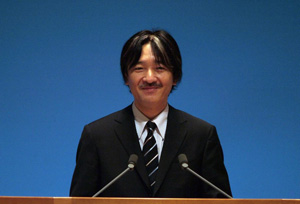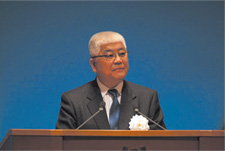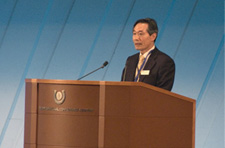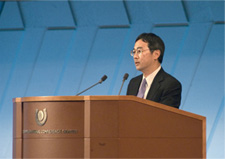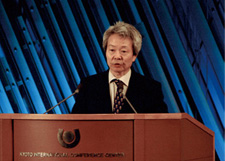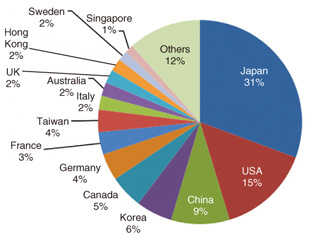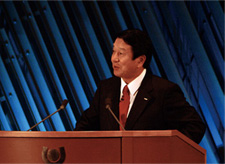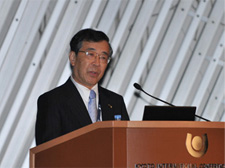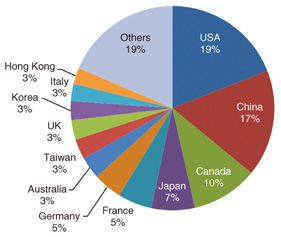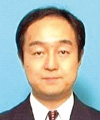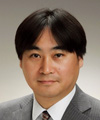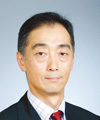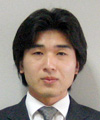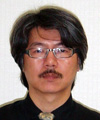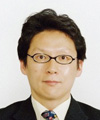 |
|||||||||
|
|
|||||||||
|
Information Vol. 9, No. 11, pp. 45–50, Nov. 2011. https://doi.org/10.53829/ntr201111in1 ICC2011 was Held in Kyoto––With Wishes for Recovery from the EarthquakeAbstractDespite the Great East Japan Earthquake (also known as the 2011 Tohoku Earthquake and Tsunami), the International Conference on Communications 2011 (ICC2011) was held on June 5–9, 2011, at Kyoto International Conference Center (ICC Kyoto) in Kyoto with wishes for recovery from the earthquake. The NTT Group had a booth and showed the latest R&D products in the co-located ICC Kyoto Exhibition. This article reports on ICC2011 and ICC Kyoto Exhibition.
1. IntroductionThe International Conference on Communications 2011 (ICC2011) [1], [2] was held on June 5–9, 2011 at Kyoto International Conference Center (ICC Kyoto) in Kyoto, Japan. Following the tradition of Kyoto, which was the ancient capital of Japan for 1200 years, the theme of the conference was chosen as “Source of Innovation: Back to the Origin”. With this theme, the conference was intended to provide opportunities to rethink traditions and conventions, which could lead to epoch-making innovations. Noritaka Uji, Representative Director and Senior Executive Vice President of NTT, acted as the General Chair of the conference, which was sponsored by the IEICE Communications Society, the IEEE Communications Society, and the Science Council of Japan, in cooperation with Kyoto Prefecture and Kyoto City (IEICE: Institute of Electronics, Information and Communications Engineers). This article describes the main topics of the conference. Because of the Great East Japan Earthquake (also known as the 2011 Tohoku Earthquake and Tsunami) on March 11, 2011, the conference was almost called off. However, backed up by warm and cheerful supporters from around the world, the conference was regarded as a cornerstone of recovery, and a commemorative ceremony was performed in the presence of His Imperial Highness Prince Akishino, resulting in powerful messages for recovery being sent out to the world.
2. Commemorative ceremonyWishing for recovery from the earthquake and regarding the conference as its cornerstone, the conference organizers arranged a special program called the commemorative ceremony for the morning of June 7. It was our great honor and privilege to have the presence of His Imperial Highness Prince Akishino at this ceremony. The distinguished guests also included the Vice Governor of Kyoto Prefecture, Shuichi Yamauchi; the Vice-Mayor of Kyoto City, Fumihiko Yuki; and the President of the Science Council of Japan, Ichiro Kanazawa. Reflecting on the progress of the recovery effort from the Great East Japan Earthquake, Prince Akishino offered special appreciation to the packed audience for participating in this conference and extended his heartfelt sympathy to all that were affected, while emphasizing the essential role of this conference in achieving an advanced information and communications technology (ICT) society. In the solemn atmosphere, the hall was filled with tremendous applause. 3. Opening plenaryICC2011 officially commenced with the opening plenary on June 6. After being introduced by the Executive Chair, Prof. Kouichi Asatani, the General Chair, Noritaka Uji of NTT, gave the welcome address in which he expressed his sympathy to those affected by the earthquake as well as thanks to those who had supported Japan’s recovery effort and to the participants for coming to this conference. Looking back at its history since 1987, when GLOBECOM was first held in Tokyo and the first mobile phone service started in Japan, he identified the valuable contribution of this community; it has played an essential role in the advancement of ICT. However, he also emphasized that this recent disaster reacquainted us with the challenges of the real world and that further contributions were needed from this community to achieve sustainable societies. In their remarks, the President of the IEEE Communications Society, Prof. Byeong Gi Lee, and the Technical Program Committee (TCP) Chair and President of IEICE Communications Society, Kazuo Hagimoto, also expressed their sympathy as well as their thoughts on future directions of research and development. It was an impressive occasion when all of the participants joined in a moment of silence at the request of Prof. Lee.
4. Technical programDespite the concerns and worries created by the earthquake and tsunami and by the subsequent nuclear power plant problems, more than 1800 researchers and engineers from all over the world participated in the conference and actively discussed the latest developments in ICT. The majority of the participants were from Japan (31%) followed by the USA (15%), China (9%), and Korea (6%) (Fig. 1).
4.1 Keynote addressesThree executive leaders from industry and academia were selected as the ICC2011 keynote speakers. Ryuji Yamada, President and CEO of NTT DOCOMO, described his company’s actions for new growth. First, he detailed the company’s response to the earthquake, highlighting the fact that communications were restored to the pre-disaster level by the end of April through the use of large-zone base stations, satellite links, and high-performance antennas. Noting the proliferation of smartphones and the new Xi™ (pronounced crossy) service provided by NTT DOCOMO, which is Japan’s first LTE (Long Term Evolution) mobile service, he introduced the concept of collaboration between the device and the network as an enabler of new services. The demonstration of the Translator Phone was impressive enough to convince the audience of the veracity of his remarks. Prof. Maurizio Decina, Politecnico di Milano, described his vision of future networks and services by introducing the latest developments of enabling technologies for the Internet of things. He envisioned the need for a flatter and much more densely interconnected Internet for things. At the end of his talk, he eloquently appealed to the audience, shouting: “Ganbare, Nippon” (Stay Strong, Japan). Dr. Toshitaka Tsuda, Fujitsu Laboratories, spoke of the ICT paradigm shift and communications technology trends. Showcasing innovative enabling technologies, he proposed a new paradigm called the human-centric intelligent society, which will create a new value chain for a more dependable, intelligent ICT society.
4.2 Technical symposiaThe TPC received 2838 technical submissions from 64 countries and regions and selected 1092 papers for presentation. The overall acceptance rate was 38.5%. For this selection, each paper was carefully peer-reviewed by at least three reviewers, all of whom worked closely with the 47 symposium co-chairs and 2254 TPC members in 11 symposia and three tracks. The accepted papers were presented in 198 sessions: 180 lecture-style sessions (900 papers) and 18 poster-style sessions (192 papers) (Fig. 2).
4.3 TutorialsAs the ICC2011 tutorial program, the best 16 tutorials were selected out of the 59 proposals submitted. The latest topics by high-profile lecturers attracted many attendees. Topics included evolution to 4G (fourth generation) wireless, cooperative wireless communications, next-generation Internet, visible light communications, and vehicular networking. ICC2011 offered one free tutorial to each attendee with a full or limited registration and more than 900 people were registered. 4.4 WorkshopsNine full- or half-day workshops were organized for ICC2011. 81 papers were selected for presentation out of 171 submissions. The topics included heterogeneous networks, smart grid communications, future networks, and green communications. Those workshops were organized by small groups of researchers interested in brand new topics. Extensive discussion continued even after the scheduled program ended. 4.5 Business forumThe Business Forum was organized to create a venue for facilitating collaborations between attendees from academia and industry. The program consisted of two parts: executive and general sessions. In the executive sessions, high-profile leaders were invited to present their visions and strategies for corporate business or emerging research topics. General sessions were organized as panels on emerging topics, such as smart grid, next-generation access networks, wireless sensor networks, green ICT, and optical devices. The attendance at sessions was roughly 30–100 people, who had interesting discussions. 4.6 ICC Kyoto ExhibitionThe ICC Kyoto Exhibition was organized by Hiromichi Shinohara, Director and Senior Vice President, Director of Research and Development Planning Department of NTT, and co-located with ICC2011 in the event hall of ICC Kyoto on June 6–8. For this exhibition, ten exhibitors and two publishers were registered. Nine of the world’s leading companies, including the NTT Group, and a national research institute working in all areas of telecommunications and networking chose the largest available booths (floor space: 54 m2) to exhibit their latest products, services, and applications. The many demonstrations on next-generation optical network technologies, LTE technologies, augmented reality technologies, green ICT, and Home ICT attracted many researchers and engineers to ICC2011. The NTT Group exhibited its state-of-the-art ICT on Japanese advanced broadband networks. As application technologies on the Next Generation Network, it exhibited a Home ICT platform using OSGi [3] technology (NTT Cyber Solutions Labs.), broadband wireless home networks (NTT Network Innovation Labs.), intelligent cryptosystems (NTT Information Sharing Platform Labs.), and field work assistance by remote collaboration (NTT Service Integration Labs.). Ultrahigh-speed optical network technologies were introduced for ultrahigh-capacity optical transport networks (NTT Network Innovation Labs. and NTT Photonics Labs.) as well as research and development of holey fibers (NTT Access Network Service Systems Labs.). Xi™, Japan’s first LTE mobile service (NTT DOCOMO), was also presented. The origami corner, the lounge with free Internet personal computer stations and free drinks station, the lucky draw, and the student travel grant award ceremony organized by ICC2011 were also useful in creating an enjoyable time. The ICC Kyoto Exhibition was wildly successful and the total number of participants over the three days came to 2600.
5. Social eventsKyoto was the capital of Japan for 1200 years and is known as the cultural heart of Japan. With its history and legacy of tradition and elegance, Kyoto was considered to be the best place for this conference. The venue, the Kyoto International Conference Center (ICC Kyoto), was the first national conference facility in Japan when it opened in 1966. Its unique design let participants enjoy Japanese traditional architecture as well as modern decoration and furnishings. On June 5, attendees were welcomed by a performance of koto, a Japanese traditional musical instrument, played by ladies dressed in Japanese kimono. With traditional Japanese cuisine such as sushi served at a small wooden booth, attendees met and talked with friends and new acquaintances from all over the world until late in the evening. Attendees who participated in the conference banquet at the Grand Prince Hotel Kyoto on June 7 enjoyed Kyoto’s traditional dance and a karate demonstration by the national team of Japan. The performance was highly impressive and so breathtaking that the stage soon rang with sustained applause. 6. ConclusionsWith the presence of His Imperial Highness Prince Akishino, the International Conference on Communications 2011 (ICC2011) was successfully held in Kyoto by overcoming the difficulties of the Great East Japan Earthquake. It turned out to be an unforgettable event in the history of Japan’s ICT for the participants, organizers, and supporters including the NTT Group. It was headed by Noritaka Uji, Senior Executive Vice President of NTT, who was General Chair of the conference. The next GLOBECOM (GLOBECOM 2011) will be held in Houston, Texas, USA, in December and ICC2012 will be held in Ottawa, Canada, next June. References
|
|||||||||








